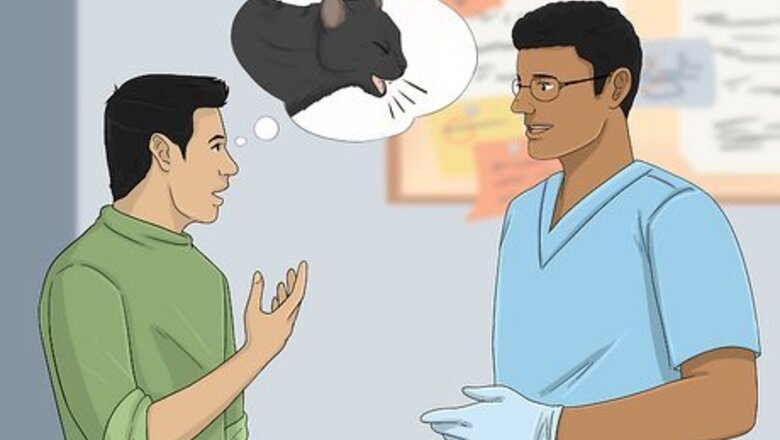
views
Going to the Veterinarian

Lay out the problem to the vet. Once you're at the vet's, you'll need to give them as much information as you can. Let the vet know when the cat swallowed the string, how long you think the string was, and what type of string it was. The vet will best be able to tell you how to move forward.
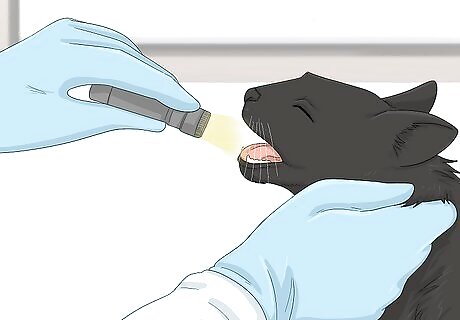
Be ready for a physical exam. The vet will perform a physical exam first. Often, string will wrap itself around a cat's tongue, while the rest of it is swallowed, so the vet will check inside the cat's mouth and under the tongue. Keep in mind that the vet will need to gently restrain your cat to examine it. Some cats may be frightened need to be sedated for a more thorough exam. Doing this will help your vet fully explore the extent of the problem.

Ask about x-rays. With this condition, your cat will usually need x-rays. An x-ray will tell the vet where the string is in the cat, allowing them to make a judgment about treatment. The vet may use barium to enhance the x-ray, as often strings may not show up clearly on a plain radiograph.
Understanding Treatments

Expect fluids and pain management for your cat. If your cat has been vomiting a great deal or had diarrhea, the vet will likely need to give your cat fluids intravenously first thing. Also, if the cat is in a great deal of pain, the vet will attend to that need by giving the cat pain medications.
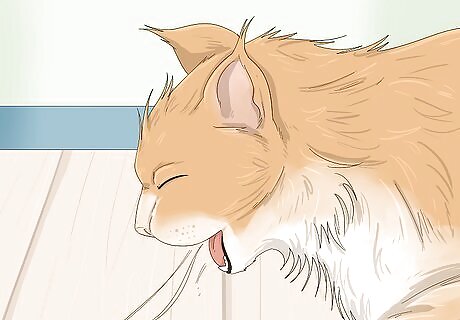
Know the vet may induce vomiting. One way objects like strings are removed is to make the cat vomit it up. Usually, this method is used if the object hasn't gotten too far in the cat's digestive tract. However, you should not try this method at home without explicit directions from your vet, as you can do more harm than good.
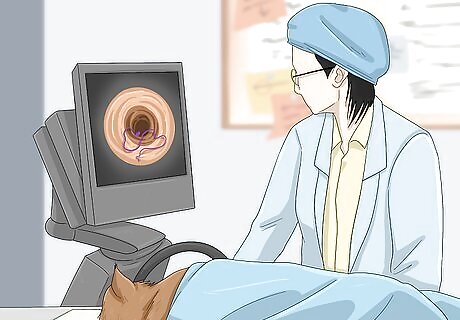
Ask about an endoscopy. This treatment is where a tube is inserted into your cat through its mouth. The vet will use the tube to pull the string out. However, this treatment might not always be appropriate, depending on where the object is. If your veterinarian is part of an emergency practice, they may be able to perform the endoscopy. Alternatively, they may refer you to a clinic that does perform this specialized procedure if they do not have the ability to do it.

Understand surgery may be the only option. If the string has gotten into the cat's intestines, it may have bunched up the intestines or lacerated them. In many cases, the only treatment is surgery to remove the string and to fix any problems with the intestines. If the string has damaged your cat’s intestines, your cat may face a long and difficult hospitalization and recovery. Strings can be deadly to cats, and there is a possibility that the internal damage is so severe that the cat may need to be humanely euthanized.
Helping the Cat at Home
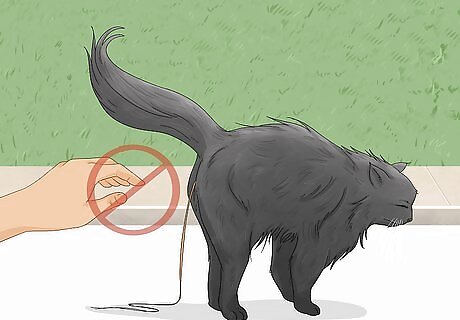
Don't yank a string sticking out of your cat's anus. If you see a string protruding from the rear end of your cat, you may be tempted to pull it out to help the cat along. However, if the other end is stuck somewhere inside the cat, you could cause more damage. You can tug very, very gently on the string while another person holds the cat. If it comes out, that's good. However, if you feel any resistance, stop immediately. You can also cut the string so it's not too long, leaving an inch or two. Be careful not to catch any of the skin.
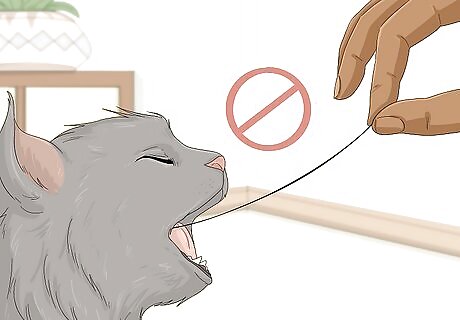
Don't pull on the string if it's in the cat's mouth. Similarly, if you see a string under the cat's tongue or wrapped around the back of the cat's tongue, don't try to yank it out. You don't know how long the other end of the string is, and it could be entangled in the cat's intestines.
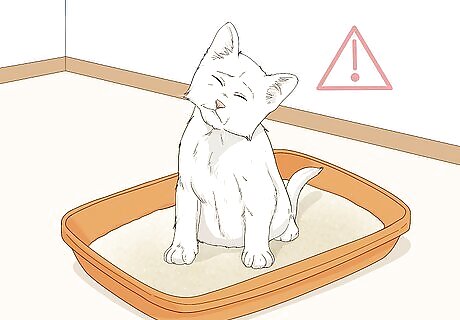
Monitor the cat's bathroom habits if you don't take the cat in. If you do keep the cat at home, keep an eye on the cats bathroom breaks. If your cat seems upset while going to the bathroom (crying out, for instance), that's a good sign you need to take the cat in to the vet.
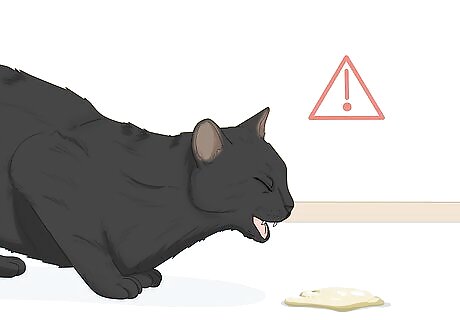
Check on your cat's behavior if you don't take the cat to vet. Vomiting and loss of appetite are also good signs it's time to take the cat in to vet. Similarly, if your cat seems lethargic, particularly in connection to stomach problems, it is time to take your cat in.

Take a look at your cat's tongue. If your cat develops a purple tongue, that's another sign it's time to go to the vet. A purple tongue indicates the string has wrapped around the back of the tongue, cutting off the blood supply.


















Comments
0 comment